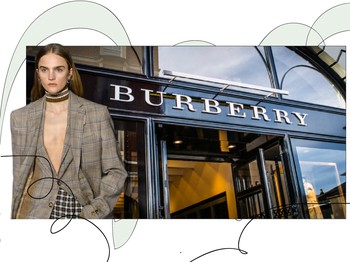Everyone in their life must have gone through that phase in their childhood era where secretly wearing their parent's adult items brought joy and satisfaction. We envied our parents' clothing-the structured suits, high heels, and tailored garments that seemed to define the "grown-up" world. We used to think being grown-ups was amazing-being able to earn money and spend it on things we adore. We told ourselves that wearing sophisticated clothing items that resemble luxury and adulthood was definitely heaven on earth. This longing to wear "adult" clothes was a marker of maturity, and it made us feel closer to a version of ourselves that was independent and self-assured. However, the fashion industry has taken an unexpected turn once we reach the point where we can spend our adult money on them.
Fashion's Obsession with Childlike Aesthetic
We all know that fashion houses and designers may sometimes play with kitschy and cutesy items to showcase on the runway that may be just the right addition. But lately, the childlike aesthetic has taken over-no, not all of them, but there's a noticeable amount of it. No matter how cutesy they look or how much they resemble childhood aesthetics, these fashion items definitely require a very adult salary to wear. It seems ironic-how the very things we once yearned to outgrow now dominate luxury collections. In a way, the very things we once yearned to leave behind are now being celebrated on the runway, inviting consumers to revisit a time of innocence and playfulness..
Oversized silhouettes, ruffled collars, pastel colors, and motifs like cartoon characters and teddy bears are popping up in high-end collections, often drawing inspiration from childhood memories rather than the polished looks of adult life. Several renowned fashion houses have adopted this childlike approach, demonstrating its influence on the high-fashion world. Designers like Gucci, led by Alessandro Michele, have consistently incorporated childlike elements into their collections, mixing elements of playfulness with luxury. Michele's use of colorful, quirky prints and oversized silhouettes often blurs the line between childlike charm and high fashion. The brand's FW2020 collection, for instance, featured oversized coats and dresses with bold patterns, reminiscent of children's play clothes, but executed in luxurious fabrics like velvet and silk.
Louis Vuitton, under the direction of Nicolas Ghesquière, also embraced a playful aesthetic in its collections, particularly through accessories. The famous Monogram bag has been reimagined in fun, almost cartoonish designs, bringing together youthful energy with the elegance of the brand. Other brands like Marc Jacobs have made direct references to childhood, with pieces inspired by the 90s, a time when playful, graphic tees and sneakers were all the rage. Moreover, Simone Rocha, known for her ethereal designs, frequently uses delicate fabrics, tulle, and frills, creating garments that resemble the whimsical dresses often worn by young girls. These pieces are, of course, intended for an adult market but evoke a sense of nostalgia for the innocence and freedom of youth.
At Coach, models carried big leather handbags in the shapes of hearts or teddy bears, some with stickers slapped all over them, adding a playful touch to the sophisticated world of luxury bags. Simone Rocha also embraced a childlike aesthetic, with bejeweled hair clips sparkling under the catwalk lights, reminiscent of schoolgirl accessories. At Chopova Lowena, rhinestone-covered sneakers paired with graphic neon socks evoked a schoolyard vibe, mixing childhood memories with modern high fashion.
Louis Vuitton also added big, colorful gemstones onto its iconic monogrammed leather handbags, creating pieces that felt like they were perfect for a stylish teatime.
The surge in childlike aesthetics within fashion can be traced to a broader cultural trend. In an era marked by uncertainty and increasing stress, many consumers are yearning for comfort, simplicity, and a return to innocence. Childhood represents a time when life was carefree and the pressures of the adult world didn't yet exist. As such, the embrace of childlike elements in fashion could be seen as an antidote to the complexities of adulthood.
Psychologically, the fashion industry's turn toward the childlike aesthetic is also a reaction to the intense pressures of modern life. Consumers are looking for ways to cope with stress, and wearing clothing that evokes feelings of joy, nostalgia, and play can provide a sense of emotional relief. In a way, these clothes offer a form of escape-an opportunity to reconnect with a more innocent and uncomplicated version of oneself. This longing for comfort and nostalgia has led designers to embrace a softer, more whimsical aesthetic.
For the consumer, wearing clothing that evokes a childlike aesthetic can trigger a range of emotions. On one hand, it can feel liberating. The oversized shapes, soft fabrics, and bright colors create a sense of lightness, which can be a welcome contrast to the often restrictive nature of adult clothing. Many people find joy in the nostalgia that these garments invoke, reminiscent of a time when they were free from adult responsibilities and worries. It's as though wearing these pieces brings back the simple pleasures of childhood-like playfulness, imagination, and unburdened joy.
(DIP/tim)
































